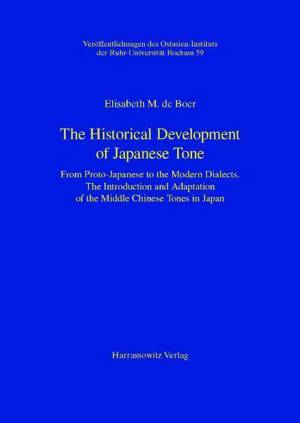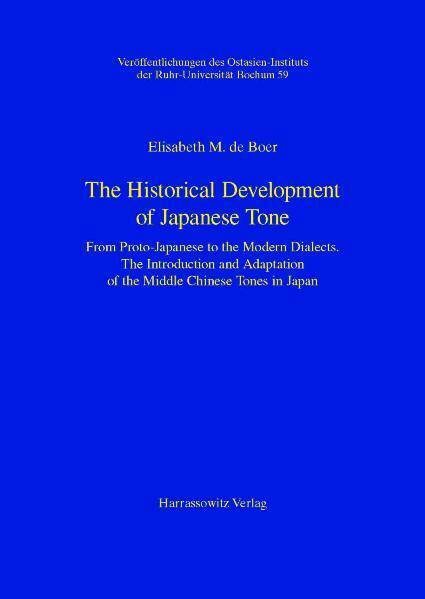
- Afhalen na 1 uur in een winkel met voorraad
- Gratis thuislevering in België vanaf € 30
- Ruim aanbod met 7 miljoen producten
- Afhalen na 1 uur in een winkel met voorraad
- Gratis thuislevering in België vanaf € 30
- Ruim aanbod met 7 miljoen producten
Zoeken
The Historical Development of Japanese Tone
From Proto-Japanese to the Modern Dialects. the Introduction and Adaptation of the Middle Chinese Tones in Japan
E De Boer
Paperback | Engels | Veröffentlichungen des Ostasien-Instituts der Ruhr-Universität, Bochum | nr. 59
€ 307,95
+ 615 punten
Omschrijving
The reconstruction of the historical development of the modern Japanese tone systems is one of the major issues in Japanese historical linguistics. The prevalent theory (Kindaichi 1951), which regards the Kyoto type tone system of central Japan as most archaic fails to explain the modern dialect data. In 1979 R.S. Ramsey proposed an alternative theory, which regards the peripheral Tokyo type dialects as archaic. Even though this theory offered a convincing explanation to many problems that remained unsolved in the prevalent theory, it failed to find acceptance. Part I of Elisabeth de Boer's study shows how data from a host of Japanese dialects - from the north-eastern tip of Japan to the Ryukyu archipelago in the south-west - offer additional proof for Ramsey's theory. The appendix deals with evidence from Japanese loanwords in Ainu. Part II states that - contrary to what has often been thought - Ramsey's theory is not in contradiction with the philological data. The appendix deals with the interpretation of Buddhist chant as a source of historical information on the Japanese tone.
Specificaties
Betrokkenen
- Auteur(s):
- Uitgeverij:
Inhoud
- Aantal bladzijden:
- 600
- Taal:
- Engels
- Reeks:
- Reeksnummer:
- nr. 59
Eigenschappen
- Productcode (EAN):
- 9783447062824
- Verschijningsdatum:
- 1/10/2010
- Uitvoering:
- Paperback
- Formaat:
- Trade paperback (VS)
- Afmetingen:
- 170 mm x 239 mm
- Gewicht:
- 1219 g

Alleen bij Standaard Boekhandel
+ 615 punten op je klantenkaart van Standaard Boekhandel
Beoordelingen
We publiceren alleen reviews die voldoen aan de voorwaarden voor reviews. Bekijk onze voorwaarden voor reviews.








